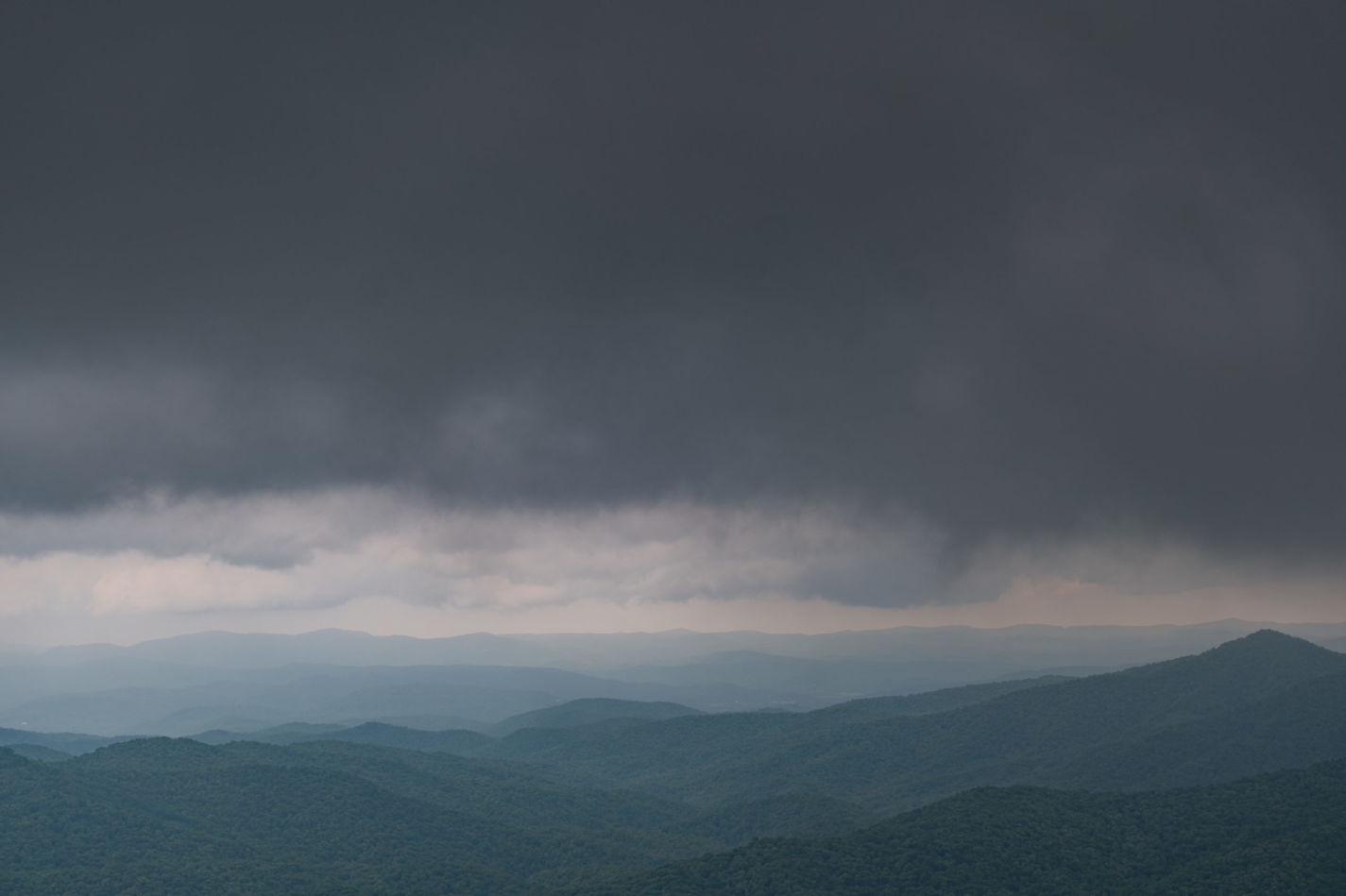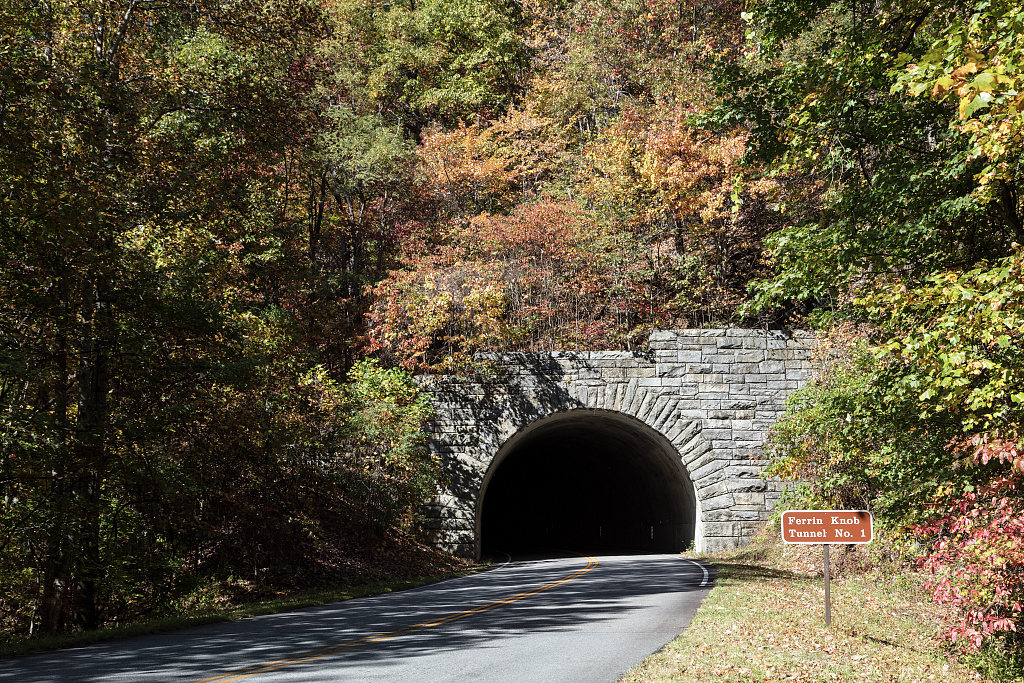One of my favorite drives around the U.S. is the Blue Ridge Parkway through North Carolina. Mountains and valleys covered in trees, a sight to see any season but especially during summer and autumn. Some of my fondest childhood road trip memories were with my grandparents, while my grandfather drove and told stories about the parkway or the areas we were passing by. Rich in history, forests, and beauty, the Blue Ridge Parkway is a must-see when traveling the Southeastern U.S.
At around 3,500 to 4,000 feet above sea level (1100-1200 m), between mile markers 238.5 and 244.7, sits the largest recreational park on the parkway — Doughton Park. With lookout points for taking in photogenic views, campgrounds, hiking trails, restrooms, grills, and more, it is a great place to stop along the Appalachian journey. Doughton Park was named after the North Carolinian representative, Robert Lee Doughton, who helped create the Blue Ridge Parkway.
Robert Lee “Bob” Doughton (1863-1954) was born in Laurel Springs, North Carolina, and named after Confederate General Robert E. Lee. As a Democrat, Doughton represented his district for 42 years in the U.S. House, from 1911 to 1953. Doughton was not only a representative but also a key chair of the powerful Ways and Means Committee. This committee within the House of Representatives has jurisdiction over all taxation, tariffs, and other revenue-raising measures and programs that would later include social security, unemployment insurance, Medicare, foster care and adoption, and enforcement of child support laws.
Daughton’s day-to-day career was being the president of the Deposit and Savings Bank of North Wilkesboro from 1911 to 1936 and later the chairman and director of the merged Northwestern Bank. He was as active in his political life as he was in his personal life as if the two intertwined harmoniously. Although Doughton did not agree with everything supported by President Franklin D. Roosevelt, Doughton did support most things FDR pushed for, including the passing of the National Industrial Recovery Act, the Social Security Act,
The Blue Ridge Parkway project began on September 11, 1935, in Doughton’s Alleghany County, where Doughton also owned around 5,000 acres of pristine land for farming, cattle, and leisure. Although, records are scarce regarding any land sold by Doughton or that which was taken by the state or federal government.

The purpose of building the parkway was to “create jobs” for regional workers, according to FDR, Doughton, and others involved in the project. While simultaneously, it took advantage of the scenic views in the North Carolina mountains. The road itself is only designed for non-commercial purposes, has a maximum speed of 45 miles per hour, for all 469 miles, and is not maintained or able to be used year-round. North Carolina and Virginia used eminent domain to acquire around 40,000 acres, some of which were appropriated from native tribes. Eventually, as the parkway came to be completed, most of the land around the Blue Ridge Parkway was made federal land.
The Blue Ridge Parkway has been a top-listed tourist destination since most of the scenic road was completed in 1966 and gained even more tourists once the last section of Grandfather Mountain was completed in 1987. The road has particularly helped tourism in a few towns in the region, including Asheville, Boone, Galax (V.A.), and Roanoke (V.A.). However, COVID-19 fears, restrictive mandates, rising fuel costs, and growing economic concerns have somewhat slowed down tourism to the region and, in general, across the U.S.

Doughton, FDR, and others may have had their hearts in the right place with a desire to create jobs, better roads, improve tourist infrastructure, and preserve land, assuming Doughton did not pursue the protection of Blue Ridge Parkway land from a eugenics perspective much like Roosevelt and John Muir along with the Sierra Club publically did throughout the nation. Of course, NIRA, U.S. Social Security, Marijuana Tax Act, and the New Deal were designed with eugenics in mind. i.e. “racial improvement,” or “planned breeding.” Today, although there are probably little-to-no eugenicist motivations behind some of the remaining programs or their products, there is still plenty of room to improve.
As for the Blue Ridge Parkway, the first of those improvements should be to better benefit North Carolinians and the good people of the Appalachian Mountains. The best way to aid them is by returning the park in its entirety to state ownership and then privatizing all that it can. Many people react in haste, believing this necessarily means the destruction of the parkway itself or the beautiful land it resides on now. However, many people in the region live on privately owned land and have joined in voluntary conservation agreements. There can be a major incentive for individuals and companies to preserve the parkway’s appreciation for nature.
By opening up the Blue Ridge Parkway to private ownership, companies or organizations may adopt or own the road to help keep it clean and safe for the year. It will enable more commercial use saving fuel and time over other routes and open the area to more business and development, which will mean more people would have access to an improved, growing local market. It will also improve the income and lives of those in the region.
The second improvement would come socially, beyond the drastic economic improvements for the region, in the renaming of Doughton Park, as this would help remove the inadvertent praise of Robert E. Lee, chip away at the state-sanctioned socialist philosophy of public property ownership, provide some land rights and benefits back to the native tribes affected by the federal controls and parkway use, while alienating the likely eugenics origins of the park.
I can only imagine what amazingly significant good can come if the 88,000 acres were returned to the states of North Carolina and Virginia and then sold to others who are incentivized to get the most productivity out of this land.
Joshua D. Glawson works in technology and currently resides in California.